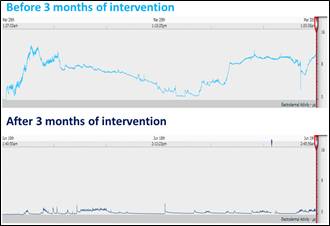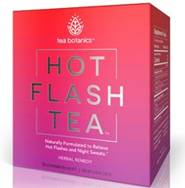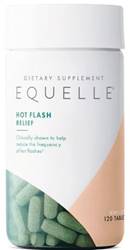Introduction
Menopause is a phase of every woman’s life between the age of 45 and 55 years when permanent cessation of the menstrual cycle happens with the end of fertility due to the declined level of female hormone estrogen as shown in Figure 1.
Menopause is a phase of every woman’s life between the age of 45 and 55 years when permanent cessation of the menstrual cycle happens with the end of fertility due to the declined level of female hormone estrogen as shown in Figure 1.
Estrogen production by ovaries starts lowering several years before menopause, which is called the perimenopause phase and it lasts until ovaries stop releasing eggs. As a result, menopause is associated with several symptoms as shown in Figure 2.

Figure 2 (Source)
During menopause, the lower level of estrogen leads to the dilation of blood vessels, resulting in more blood rushing throughout the body. As an increased amount of blood is getting pumped through the body, intense heat is produced in the upper half of the body, resulting in intense perspiration when the body is trying to cool down which is termed as hot flash or vasomotor symptoms [1].
Medication, such as hormone replacement therapy (HRT), and healthy lifestyle changes, may reduce the risk of some of these conditions.
HORMONE REPLACEMENT THERAPY (HRT) was first introduced in the 1940s, but became popular in the management of menopause in the 1960s [2]. In order to reduce the symptoms of menopause, HRT is given in the form of tablets, patches, creams or gels; and it might be estrogen only, or estrogen and progesterone combined (CCT) or estrogen, progesterone and testosterone combined. Tibolone is a synthetic form of HRT, which gives similar results to CCT. HRT improves bone health and reduces the risk of osteoporosis and broken bones, and also reduces the risk of bowel cancer, but does not prevent heart disease, strokes or dementia. Data from the Danish Osteoporosis Prevention Study suggests that early initiation of HRT after menopause reduces heart failure, or myocardial infarction [3]. Studies reveal that a 50 year-old woman has a 6.1% risk of getting breast cancer in the next 30 years. If she is on estrogen-only HRT for five years, the risk becomes 6.28%, whereas, if she takes combined HRT (estrogen and progesterone) for 3-10 years, the risk will be 6.4-7.69% [4]. During HRT, sometimes estrogen binds to the cancer cell receptors and attaches to part of the DNA inside the cell’s nucleus, which induces cells to keep dividing out of control, resulting in a cancerous tumour [5]. Studies report that postmenopausal women undergoing HRT using estrogens and tibolone increase the risk of endometrial cancer, whereas combined estrogen-progestagen HRT has a greater risk of breast cancer [6].
Keeping in mind the increased risk of developing breast, endometrial or ovarian cancer by long term HRT after menopause [7-9], complementary/alternative therapies (CAM) for menopausal women started becoming popular because they are more natural and alleviate the symptoms associated with menopause [10]. CAM includes hypnosis, cognitive behavioural therapy [CBT], relaxation, biofeedback, meditation, aromatherapy, herbs, vitamins, minerals, dietary supplements phytoestrogens, etc. [11].
Medicinal herbs with phytoestrogen have been considered as among the most remarkable non-hormonal alternative treatments to alleviate the discomforts of a menopausal woman. Two major phytoestrogens, isoflavones and lignans having similar chemical structures of estradiol exert an antiestrogenic effect when the estrogen level is high in the body but become more estrogenic when the estrogen level is low in the menopause phase [12]. Phytotherapeutic extracts containing isoflavones such as soy extract and red clover, or extracts from evening primrose or cimicifuga (black cohosh Actaea racemosa, syn. Cimicifuga racemosa) have been found to be effective in the treatment of hot flashes [13]. Isoflavones in soybeans include genistein, daidzein, glycitein and their acetyl and malonyl derivatives [14] and studies reveal that soy isoflavones alleviate hot flashes by 43.3% in menopausal women with at least seven hot flushes daily as compared to 30.8% in placebo after 12 weeks of consumption [15]. 24 hours ambulatory skin conductance (SC) studies after 12 weeks treatment of aglycone rich Red Clover isoflavone showed that it alleviates existing menopausal vasomotor symptoms, shown in Figure 3 [16].

Figure 3 (Source)
When ovariectomized rats and postmenopausal women were treated with black cohosh (Cimicifuga racemosa) extracts, it was observed that triterpenes with GABA-ergic activity and a serotonin analogue in CR extracts do not bind to estrogen receptors and thus, alleviate postmenopausal symptoms such as hot flashes [17]. Vitagnus, a local plant in Iran, was found to be equally effective in the improvement of menopause symptoms [18]. Anthocyanin-rich blackcurrant extract, through its phytoestrogenic activity, promoted blood vessel health and improved cardiovascular disease in ovariectomized (OVX) rats by regulating nitric oxide synthase (eNOS) expression and nitric oxide (NO) synthesis in human endothelial cells [19]. Phytoestrogen compounds in pumpkin seeds, such as secoisolariciresinol and lariciresinol, have estrogen-like effect and help prevent hyperlipidemia, osteoporosis and hormone-dependent tumour in menopausal women [20]. Almost equal efficacy of soy isoflavones on the prevention of postmenopausal osteoporosis has been proved compared to HRT. It was observed that average values of urinary deoxypyridinoline decreased by 11.38% when treated with phytoestrogens, and by 15.32% with HRT for one year in the group of 325 postmenopausal women, as shown in Figure 4 [21].

Figure 4 (Source)
Researchers observed that postmenopausal women eating a good amount of dietary lignans are 14 % less likely to develop breast cancer than those who consume less lignan-rich food [22]. Studies revealed that post-menopausal hot flashes could be reduced by 50% with plant lignan isolated and purified from the Norway spruce (picea abies) [23]. Flaxseed, the richest source of lignan, particularly secoisolariciresinol diglucoside (SDG), is found to be effective in the treatment of menopausal hot flashes, cyclic mastalgia, reduction in vasomotor symptoms, tumour growth and recurrence, and the prevention of breast and ovarian cancer [24,25]. Other lignan-rich sources include seeds of European Cirsium spp., fruit of Morinda citrifolia (Indian mulberry), fruit and seed extracts of Articum lappa, S. chinensis fruit extracts, Schisandra sphenanthera leaves and stems, fruits, roots, stems and leaves of Kadsura coccinea, etc. [26].
8-Prenylnaryngenin (8-PN), a phytoestrogen with estrogen-like activity, available in the female inflorescences of hops (Humulus lupulus L.), has been found to be effective in reducing hot flashes in postmenopausal women [27].
Hot flash tea, launched by Tea Botanics, is a specially formulated tea which gives relief from hot flush and night sweat. The major ingredients are gamma-aminobutyric acid (GABA), Black Cohosh that balances hormones, Echinacea, and Wild Yam, which stimulates estrogen receptors [28].

Relizen, a non-hormonal, non-soy-based supplement from Bonafide, provides effective relief from symptoms associated with menopause, such as hot flashes, fatigue, night sweats and irritability. Relizen has been designed in Sweden and is a patented nutritional supplement containing more than 180 nutrients derived from a unique, proprietary blend of purified flower pollen extracts [29].

Equelle, a non-hormonal fermented soy germ-based formula, has been developed by Pharmavite to alleviate menopause symptoms associated with decreased estrogen, such as frequency of hot flashes, vaginal dryness, night sweats and muscle ache, improve the quality of sleep and prevent mood swings [30].

Pink Lotus introduced a 100% non-estrogenic supplement, Menopause Miracle, which gives relief from hot flashes, night sweats, vaginal dryness, mood swings, insomnia, headaches, fatigue, joint pain and more. The product does not contain Black Cohosh, which is reportedly linked to liver toxicity. The main ingredient is root extract of Angelica Gigas Nanaki and a few other botanical root extracts. The product is a patented formulation and gives relief six times faster than Black Cohosh [31].

Macafem, a herbal supplement with Lepidium meyenii, a highly-nutritious radish-like root as main ingredient, nourishes and stimulates the hormonal glands by maintaining hormone levels. It relieves menopause symptoms and other hormonal disorders [32].

Naturex, a recent acquisition of Givaudan, introduced a patented plant extract called Lifenol, obtained from female cones of Hops (Humulus lupulus). Lifenol reduces the symptoms associated with menopause, particularly hot flashes. Medical assessment showed that women who took Lifenol for two months, observed a decline in number and intensity of hot flashes, and night sweats as shown in Figure 5 [33].
Due to the declining level of male sex hormone testosterone with increasing age in men above 40 years, men also suffer from a number of symptoms such as loss of libido, morning penile erection and erectile dysfunction. This is sometimes referred to as male late-onset hypogonadism (LOH) [34, 35]. Studies showed that it is not only the lowering level of testosterone but another hormone-sex hormone binding globulin (SHBG) that starts increasing. SHBG binds with some of the available testosterone circulating in the blood, resulting in lowered levels of bioavailable testosterone. Administration of testosterone, by injection, orally, or topically, may alleviate many of these symptoms. Testosterone therapy may lead to cardiovascular complications in patients aged 40+ due to the increased expression of platelet thromboxane A2 receptor, or via other mechanisms in patients with procoagulant predisposition [36]. Administration of black ginseng and fenugreek complex extract showed an improvement in andropause symptoms in aged rats [37]. Studies on old male wistar rats revealed that oral intake of ethanol extract of Klabet seeds (Trigonella foenum graecum) at a dose of 250 mg / 250 g BB / day for 14 days increases testosterone levels [38]. Soy isoflavone daidzein regulates Ca2+ and Pi homeostasis, and improves bone health; as investigated in male wistar rats undergoing andropause [39]. Oral administration of Korean herbal formula KH-204 based on five plants Cornus officinalis, Lycium chinense Miller, Rubus coreanus Miquel, Cuscuta chinensis Lam and Schisandra chinensis Baillon to aged LOH rats increased their serum testosterone levels without any side-effects [40], as shown in Figure 6.

Figure 6 (Source)
Yoxa Health’s Andropause supplement is based on Puncturevine, Indian Ginseng, Saw Palmetto, Siberian Ginseng, Grape seed extract, kelp and various other components that boost the testosterone level without weight gain or depression and increase libido [41].

Madorra, a US-based company, has developed the first non-hormonal, non-invasive medical device to treat vaginal dryness, keeping in mind that the ![]() number of postmenopausal women in the U.S. alone is expected to hit 50M by 2020. Madorra’s simple, easy-to-use device will empower the millions of breast cancer survivors and post-menopausal women suffering from vaginal dryness to improve their sexual health and return to wellness. The device uses gentle, low-intensity, therapeutic ultrasound energy to increase vaginal blood flow and lubrication and provide relief from vaginal dryness.
number of postmenopausal women in the U.S. alone is expected to hit 50M by 2020. Madorra’s simple, easy-to-use device will empower the millions of breast cancer survivors and post-menopausal women suffering from vaginal dryness to improve their sexual health and return to wellness. The device uses gentle, low-intensity, therapeutic ultrasound energy to increase vaginal blood flow and lubrication and provide relief from vaginal dryness.
Founded in the year 2012, Damiva is a women’s health company making all-natural products. Mae by Damiva is a 100% natural vaginal lubricant that  restores moisture and long-term vaginal health. It was launched across Canada in 2014 and was a huge success. Mae is formulated with only 6 natural ingredients such as kokum butter, cocoa butter, hyaluronic acid, sucrose, sea buckthorn extract and vitamin E. Cleo by Damiva is a completely natural labial moisturizer.
restores moisture and long-term vaginal health. It was launched across Canada in 2014 and was a huge success. Mae is formulated with only 6 natural ingredients such as kokum butter, cocoa butter, hyaluronic acid, sucrose, sea buckthorn extract and vitamin E. Cleo by Damiva is a completely natural labial moisturizer.
A Next-Gen Bio Sciences start up by IIM alumni in India has initiated research ![]() on ageing and related health complications. Avant’s proprietary research products contain phytonutrients providing anti-aging benefits. POZTRON, a high-performance natural testosterone booster, is an anti-ageing supplement for men.
on ageing and related health complications. Avant’s proprietary research products contain phytonutrients providing anti-aging benefits. POZTRON, a high-performance natural testosterone booster, is an anti-ageing supplement for men.
U S Nutraceuticals, in its patent DE202016103867U1, claims about a food composition containing a phytoestrogen such as plant lignan, which includes matairesinol, 7-hydroxymatairesinol, secoisolariciresinol, lariciresinol, pinoresinol, sesame seed oil, sesamin, etc. for reducing hot flashes in a menopausal female.
Sinoveda Canada Inc., in its very recent patent US10307451B2, discloses a composition comprising isoflavones such as Biochanin A, genistein, formononetin and daidzein, active ingredients in Red clove for the treatment or prevention of postmenopausal or climacteric symptoms such as hot flashes, vaginal atrophy, vaginal dryness, diaphoresis, night sweat, urinary tract symptoms, sleep disturbance, etc.
LG Household and Health Care Ltd., in its patent application US2019070241A1, discloses a composition based on Puerariae Flos extract for preventing or treating menopausal symptoms and osteoporosis.
Serelys Pharma, in its patent application WO2018041790A1, discloses an oral composition comprising one or more aqueous extracts of the pollen or pistils from plants belonging to family Gramineae (Poaceae) or Pinaceae for treating the symptoms of peri-menopause, post-menopause, andropause and even hot flashes caused by hormone therapy in patients with cancer.
Damiva Inc., in its patent application WO2018191296A1, discloses a personal care product based on plant-based glycerides such as cocoa butter, kokum butter and shea olein, particularly for improving the vaginal health of women during menopause.
With many women not wishing to take hormones to alleviate the ill-effects of menopause, there are opportunities galore for new start-ups, which are constantly emerging to provide unprecedented options to address the uncomfortable symptoms of women, which are caused by fluctuating and lower levels of estrogen. Similarly, andropause, which has been ignored all these years, is also garnering attention. Therefore, opportunities to transform women’s and men’s healthcare is bound to explode to unprecedented levels.
References
Disclaimer:
Submit your review | |